Advances in Neutron Logging for Unconventional Reservoirs
As the oil and gas industry continues to shift its focus toward unconventional reservoirs, such as shale formations and tight oil plays, the need for advanced logging techniques has become more pressing. Recent advances in neutron logging technologies have improved the accuracy of formation evaluation, making it a valuable asset for characterizing complex rock structures and optimizing recovery in unconventional plays.
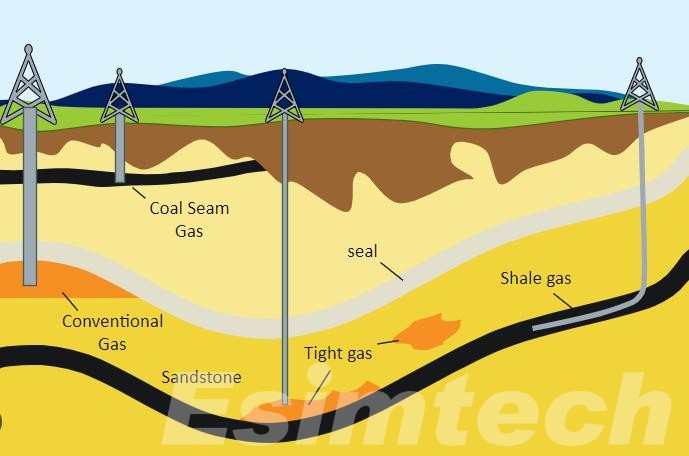
Challenges of Unconventional Reservoirs
This chart highlights the key challenges that need to be addressed when developing and producing resources from unconventional reservoirs.
| Challenge | Description | Impact on Reservoir Development |
| Low Permeability | Tight rock formations (shale, coal, etc.) limit fluid flow. | Requires advanced stimulation techniques like hydraulic fracturing to enhance production. |
| Complex Lithology | Unconventional reservoirs often have mixed rock types and heterogeneous formations. | Difficult to predict reservoir behavior, complicating drilling and completion strategies. |
| Dual Porosity Systems | Presence of both matrix and fracture porosity creates fluid flow complexity. | Challenges fluid extraction and requires specialized modeling to optimize recovery. |
| Fluid Composition Variability | Unconventional reservoirs may contain oil, gas, water, and other fluids in varying proportions. | Increases uncertainty in fluid estimation and requires accurate characterization methods. |
| High Capillarity and Wettability Issues | Capillary forces dominate in unconventional reservoirs due to small pore sizes. | Reduces oil and gas recovery, making it harder to extract resources efficiently. |
| Borehole Stability | Fragile and variable formations can lead to wellbore instability during drilling. | Increases operational risks, delays, and requires specialized drilling and wellbore stability solutions. |
| Pressure Depletion | Rapid pressure drop occurs after production starts in unconventional reservoirs. | Leads to quick decline in production rates and demands enhanced recovery techniques. |
| Uncertainty in Reservoir Size and Boundaries | Unconventional reservoirs often have irregular shapes and poorly defined boundaries. | Complicates reservoir modeling and increases exploration risk, impacting well placement strategies. |
| Environmental and Regulatory Concerns | Unconventional resource development, especially hydraulic fracturing, faces regulatory and environmental scrutiny. | Restricts operations and requires sustainable development practices to meet regulatory requirements |
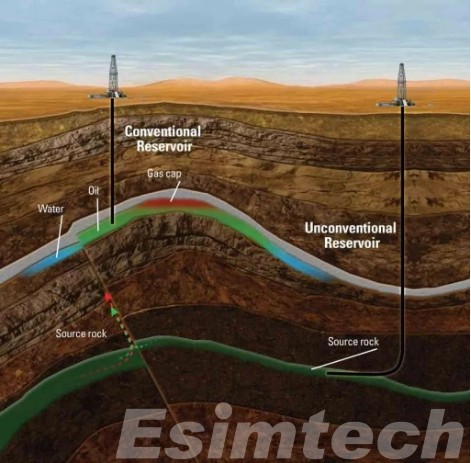
Given these challenges, neutron logging has had to advance significantly to provide reliable data for unconventional reservoirs.
Working Principle of Neutron Logging
Neutron logging works by emitting fast neutrons into the formation and measuring their interaction with the surrounding materials. Neutrons slow down as they collide with hydrogen atoms, which are abundant in both water and hydrocarbons. By measuring the returning signal, neutron tools can infer the hydrogen index of the formation, providing insights into porosity and fluid saturation.
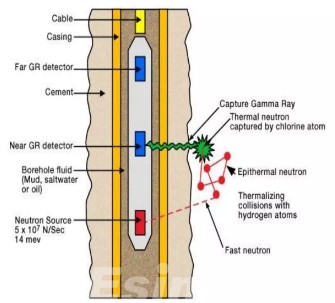
Recent Developments in Neutron Logging Technologies for Unconventional Reservoirs
1. High-Resolution Neutron Detectors
Conventional neutron logging tools face limitations in unconventional reservoirs where porosity is low and lithological heterogeneity is high. Recent advances include the development of high-resolution neutron detectors that offer greater sensitivity to hydrogen content in formations. These new detectors allow for more precise differentiation between hydrocarbons and water, even in low-porosity settings, which is particularly beneficial in tight oil and shale gas plays.
Benefit: Improved porosity measurements in low-permeability formations, enhancing the accuracy of hydrocarbon saturation estimates.
2. Neutron-Gamma Spectroscopy
Neutron-gamma spectroscopy is an emerging technique that provides additional formation data by analyzing gamma rays generated from neutron interactions with elements like carbon, oxygen, and silicon. This method allows for the identification of specific minerals and fluids, enabling a more detailed understanding of formation composition.
- Application: In unconventional reservoirs, such as shale formations, this technology is instrumental in distinguishing between different mineral layers and identifying organic-rich zones.
- Benefit: Direct elemental analysis improves lithology and fluid characterization, enhancing formation evaluation and optimizing well placement.
3. Time-Lapse Neutron Logging
Time-lapse neutron logging (also known as 4D logging) is a technique that tracks changes in the reservoir over time. This is especially useful in unconventional reservoirs where hydraulic fracturing and other enhanced recovery methods are used.
- Application: Time-lapse logging can monitor changes in fluid saturation, porosity, and fracture development as production progresses. It helps identify how fluids are moving through the reservoir, which can optimize completion designs and recovery strategies.
- Benefit: Enables operators to adjust field development plans based on real-time changes in reservoir properties, increasing recovery efficiency.
4. Dual-Porosity Neutron Logging Tools
Many unconventional reservoirs exhibit dual-porosity systems, meaning they have both matrix and fracture porosities. Advanced neutron logging tools are now capable of measuring both types of porosity separately, allowing for a more comprehensive understanding of how fluids are stored and flow through the reservoir.
- Application: In tight gas and shale reservoirs, dual-porosity tools can distinguish between fluid stored in the matrix and that within fractures, which is critical for optimizing hydraulic fracturing techniques.
- Benefit: Accurate assessment of both matrix and fracture porosities improves well completion strategies and enhances overall reservoir performance.
5. Advanced Borehole Environmental Corrections
Neutron logging in unconventional reservoirs often faces environmental challenges due to borehole size, drilling fluid composition, and formation salinity. Recent developments have improved borehole environmental corrections, making neutron log data more reliable in a wide range of conditions.
- Application: Correcting for borehole irregularities and complex fluid environments ensures that the neutron log readings more accurately reflect the true formation properties.
- Benefit: Enhanced data accuracy reduces uncertainties in formation evaluation and leads to better decision-making during drilling and completion.
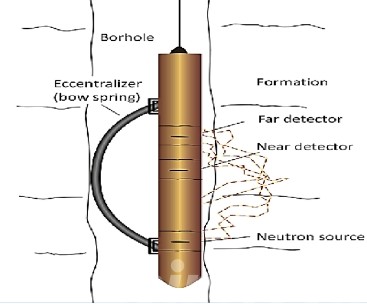
6. Neutron Logging in Horizontal Wells
With the increase in horizontal drilling, especially in unconventional plays, neutron logging tools have been adapted for use in horizontal wells. Traditional vertical well neutron logs often face challenges in these orientations, but newer tools are designed to work efficiently in non-vertical wellbores.
- Application: In shale formations, where horizontal drilling is common, advanced neutron tools provide better log quality and data interpretation, even in challenging well orientations.
- Benefit: Accurate logging in horizontal wells enables operators to assess formation properties along the lateral section of the well, optimizing production from unconventional plays.
7. Real-time Neutron Logging and Data Processing
The need for real-time data is growing as unconventional wells are often completed rapidly. New neutron logging technologies incorporate real-time data processing capabilities, allowing operators to make quick decisions during drilling and completion operations.
- Application: Real-time neutron logging tools provide immediate feedback on porosity and fluid saturation, which is critical for well placement and hydraulic fracturing operations.
- Benefit: Faster decision-making based on real-time data helps minimize drilling downtime and optimizes well placement and completion designs.
8. Applications in Complex Lithologies
Unconventional reservoirs often consist of complex lithologies, such as mixtures of shale, sandstone, and carbonates, making formation evaluation more difficult. Advanced neutron logging tools can now better handle these variations by providing more accurate porosity measurements and fluid identification in complex geological settings.
- Application: In mixed lithology formations, neutron logging helps operators identify the most productive zones by distinguishing between different rock types and fluid saturations.
- Benefit: Improved lithology differentiation enhances formation evaluation and improves resource recovery in unconventional reservoirs.
9. Integration with Other Logging Methods
The integration of neutron logging with other well-logging techniques, such as resistivity log, nuclear magnetic resonance (NMR) logging, and density logs, has become more common. These combinations allow for more comprehensive formation analysis in unconventional reservoirs.
- Application: For example, combining neutron logging with NMR provides detailed information on porosity and fluid type, while resistivity logs help clarify fluid saturation.
- Benefit: Multi-modal data analysis leads to more accurate reservoir models, improving well placement and production strategies.
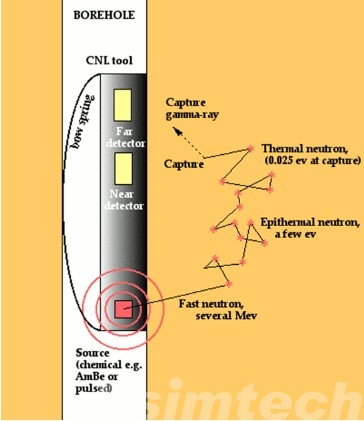
How Simulation Technology Integrated in Neutron Logging for Unconventional Reservoirs
This chart outlines how simulation technology supports neutron logging in unconventional reservoirs by addressing complexities and improving operational efficiency.
| Application | Description | Benefits |
| Modeling Complex Reservoir Geometries | Simulating complex subsurface formations and fluid distributions. | Improves accuracy of formation evaluation and reserves estimation. |
| Neutron Transport Simulations | Models neutron behavior (diffusion, scattering, absorption) in reservoirs. | Optimizes logging tool design and calibration, enhancing data accuracy. |
| Synthetic Log Generation | Creates simulated neutron logs for pre-drilling predictions and post-drilling calibration. | Reduces uncertainty by allowing comparison with actual field data. |
| Simulating Borehole Environmental Effects | Models the influence of borehole conditions (size, mud composition, salinity) on neutron measurements. | Corrects for environmental effects, leading to more reliable logs in unconventional reservoirs. |
| Time-Lapse Simulations | Tracks reservoir changes over time using neutron log data. | Monitors reservoir evolution and adjusts production strategies, optimizing resource extraction. |
| Tool Response Simulation in Horizontal Wells | Models neutron logging tool responses in horizontal wellbores. | Enhances data quality and tool performance in non-vertical wells. |
| Fluid Saturation and Porosity Estimation | Integrates neutron data with other well-logging tools to estimate reservoir properties. | Improves fluid and porosity estimates, crucial for maximizing hydrocarbon recovery. |
| Training and Tool Development | Provides virtual environment simulations for training operators and developing tools. | Reduces field errors and increases logging efficiency through advanced training and tool innovation. |
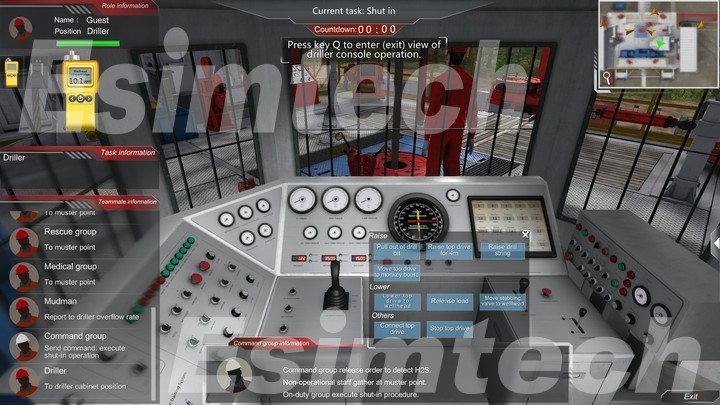
In summary, the recent advancements in neutron logging technology are driving significant improvements in the evaluation of unconventional reservoirs. with high-resolution detectors, neutron-gamma spectroscopy, time-lapse capabilities, and dual-porosity models, neutron logging is now better suited than ever to meet the complex challenges of shale, tight oil, and other unconventional plays.
From modeling complex reservoir geometries and simulating neutron transport to generating synthetic logs and correcting for borehole environmental effects, oil and gas simulation technologies have greatly enhanced the accuracy and reliability of neutron logging data.
